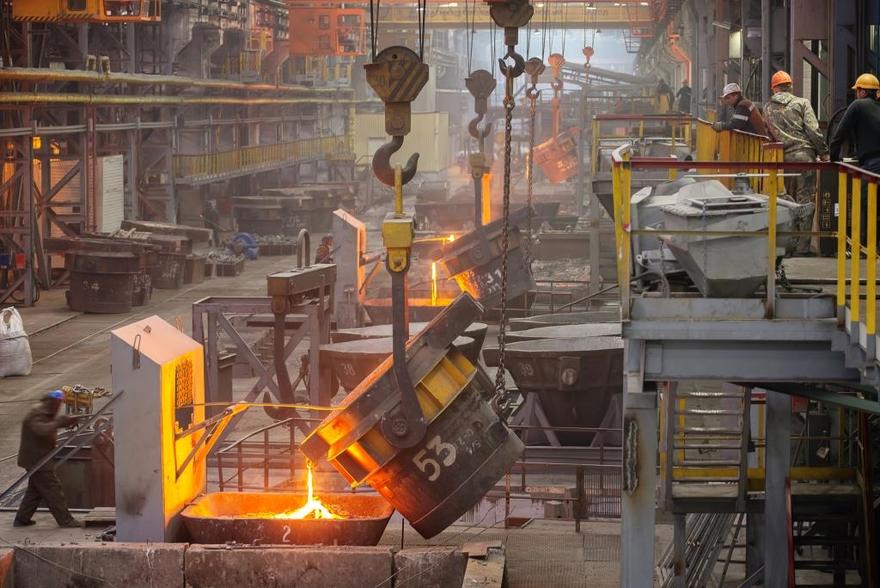Audit of lighting installation
As part of preparation of the documentation for participation in the 5th tender for obtaining white certificates, the eAs a part of preparation of the documentation necessary to participate in the 5th tender for white certificates, the external lighting system of the steelworks and the installation of internal lighting within one of the buildings were analyzed.

The purpose of the Energy Efficiency Audit (AEE) was to determine the energy and environmental performance which might be achieved by replacing standard luminaires with more effective ones for the purpose of receiving the White Certificates (BC). The investment involves the replacement of the standard luminaires with LED luminaires.
With reference to this action, pursuant to point 3.2.b of the Notice of the Minister of Economy on a detailed list of energy efficiency measures, it is possible to obtain energy efficiency certificates in the category of increasing energy savings by end users.
Energy efficiency certificates, otherwise known as white certificates, can be granted in connection with planned energy efficiency investments. An energy efficiency certificate can be obtained for the purpose of an action which results in an annual energy savings of not less than 10 tonnes of oil equivalent (toe), or with reference to a group of actions of the same type, the total effect of which exceeds 10 toe. Energy Efficiency Audit (AEE) is the basis for determining the energy efficiency of an investment.
Scope of activities of the audited company focuses on steelworks' production linked with the processing of primary raw materials.
The planned investment, which is the subject of energy efficiency assessment, reduces the amount of energy needed for lighting and significantly prolongs the lifespan of luminaires.
The energy efficiency analysis of the investment was performed on the basis of the measurement data, description of the upgrade / investment, projected design data and other information obtained from the people involved in the project, such as the type of luminaires, the actual time when lighting is on, the luminaire power and their number.
Modernization included external and internal lighting.
External lighting:
The power which is currently installed in the luminaires is about 251.63 kW, which generates annual electricity consumption of approximately 1 123 Mwh, if we take into consideration the actual lighting times.
Due to the significant wear of existing luminaires, a luminous flux of old luminaires was assumed to have the luminaire efficiency of 40%. Consequently, the reference stream for the new solution will be about 9000 lm. The case study assumed that the existing cable installation would not be replaced and the existing lighting poles would be used.
The 997 items of Luxon Cordoba LED 110 W were suggested, with estimated energy consumption of 450.1 MWh after the upgrade. Implementation of modernization will result in approximately 60% reduction of energy consumption in this area, which is a typical effect of LED lighting.
Interior lighting:
If we assume the current power installed in the luminaires and the present lighting times, the interior lighting generates the annual electricity consumption of approximately 3 000.1 MWh.
Due to the significant wear of existing luminaires, a luminous flux of old luminaires was assumed to have the luminaire efficiency of 50%. Consequently, the reference stream for the new solution will be about 10 000 lm. The case study assumed that the existing cable installation would not be replaced and the existing lighting poles would be used.
The 1247 items of LED HB2 - 120 were suggested, with estimated energy consumption of 1 310.3 MWh after the upgrade. Implementation of modernization will result in approximately 56% reduction of the energy consumption in this area, which is a typical effect of LED lighting.
In addition to the considerable reduction of power consumed by the lighting installation, it is important to remember that LED luminaires have a longer service life, which in the case of plant lighting will contribute to the additional benefits related with less frequent lighting modernization.
The implementation of a pro-efficiency action, which involves the modernization of the lighting installation in the steelworks, has resulted in primary energy savings of 609,717 tonnes of oil equivalent (toe). This amount makes it possible to apply for an energy efficiency certificate in the tender organized by the President of the Energy Regulatory Office.